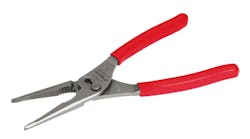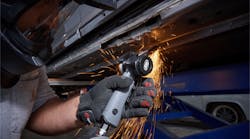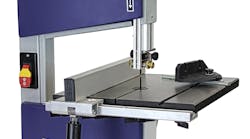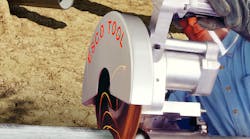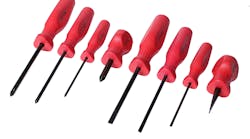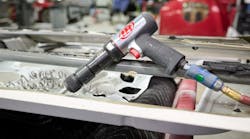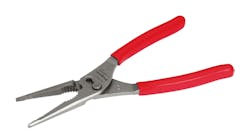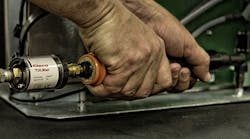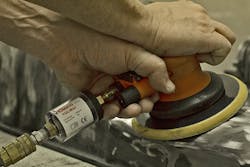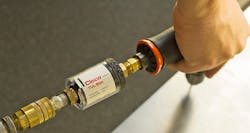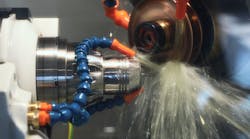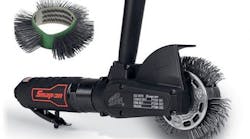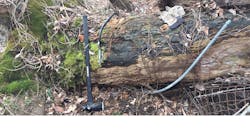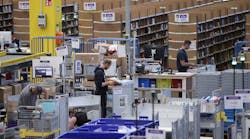The digital manufacturing revolution is in the process of disrupting every aspect of the industry.
Under any of its many names—the Industrial Internet of Things, smart manufacturing, big data, etc.—this revolution has already touched just about every step in the manufacturing process. It has made visible all of the manufacturing blind spots, revealing everything from machine cycle times to product quality across the entire global supply chain.
The result of this movement has already been profound. Tapping into this data has allowed savvy manufacturers to boost productivity, virtually eliminate unplanned downtime, and take firm, real-time control over their manufacturing processes.
However, there has been one persistent roadblock to this smart revolution: dumb tools.
Despite all of the digital progress of the IoT, most pneumatic assembly tools—no matter how sophisticated they are or the precision they achieve—are still unable to capture and report their performance to the digital web. Even simple data like cycle counts or run times between calibration has been impossible to capture in most tools.
Essentially, these devices have been running in the dark through this time of enlightenment.
Cleco, the pneumatic assembly brand of Apex Tool Group is out to change that.
Cleco has brought the pneumatic market the first effective, universal system designed to bring the industry into the digital age.
Dubbed the Cleco Tool Usage and Life Management (TULMan) electronic counter, the system attaches to any pneumatic tool, allowing it to track usage, run time, cycle times, and even consumable usage or operator efficiency in real-time.
The first product of its kind, TULMan is designed to bring critical data into the light, allowing users to boost quality and performance while also potentially saving big on repairs and efficiency.
To help understand this revolutionary new tool, we met up with Kevin Myhill, Senior Product Manager at Apex Tool Group for a quick chat about smart tools.
NED: Tell me a little about TULMan and what it can do.
Myhill: The simplest way I use to describe it that people can relate to is, it's a device we have developed to be a tripometer and an odometer for a power tool.If you think of your car, you have tripometers, odometers, and service warning lights. Your car will tell you when things need to happen.
But in the world of pneumatic power tools, there is nothing that will tell you how long you have used the tool, or how many cycles you have run the tool. Before the TULMan, if you were trying to implement a calibration process or a preventative maintenance process, the only way you could do that was based on the elapsed time, as opposed to actual usage.
Back to the car analogy, you would typically change your car oil or get your car serviced based on how many miles you drive. But you can't do that with air tools.
People will implement the air tool and say, we'll do preventative maintenance for this after 500 hours. But how are they going to know when they have run the tool for 500 hours?
They're basically using their tools in the dark.
NED: Why do think users need this kind of functionality?
Myhill: This can be a big issue, particularly on calibration.
Torque tools will generally go out of calibration based on usage, not based on calendar dates. So, if you run the tool 100,000 times, it's more likely to go out of calibration than if you run it 10 times.
But if you have to do your calibration based on elapsed time and you haven't worked out the actual usage of the tools, you could be over-calibrating some tools and, more worrisome, under-calibrating other tools. The worst thing that can happen on calibration is that when the tool comes in to be checked, it is actually out of calibration. Then, you have no idea how many fastenings were actually done incorrectly.
You can also use the Cleco TULMan to create a strong preventative maintenance program for your pneumatic assembly tools. And this could result in great cost-savings for many facilities that aren’t currently doing preventative maintenance but waiting until the tool breaks to service it. When that happens, they are left with an expensive service repair.
NED: This data seems absolutely critical for modern manufacturing. How did this industry go so long without it?
Myhill: When you stop to think about this, it' seems crazy, but it's been that way for a long, long time.
People have asked for this, but it's never really happened.
As a power tool company, we could have developed something that fit only Apex Tool Group products, or specific Cleco tools and other companies could follow suit. But, I think what sets the Cleco TULMan apart is that it is NOT restricted to only products manufactured by Apex Power Tools.
This is a universal device that you can use anywhere air is flowing, in fact. The first version of TULMan requires a minimum of 5 cfm and will work up to 20 cfm without affecting the performance of the device it is connected to, but the design is scalable if we see enough demand for different airflow uses.
NED: Okay. Tell me how it works.
Myhill: Sure. We do have a patent pending on this, so I don't mind telling you how the actual device works.
When the air starts to flow, there's a very small piston in the device and a spring. When the air flows, it pushes the piston, presses the spring. The piston has a very small magnet in it and the magnet goes in front of a reed switch. It's all very well-established technology.
By using a magnet and a reed switch, we are separating the electronics from the air. It's very important because air isn't always the cleanest. So we use that contactless switch.
NED: What about the software side?
Myhill: The software at the moment is very basic programming software that allows you to associate the counter with the tool.
The programming that you can do with the counter has the tool number, the tool serial number, you can also put the location in the factory where the tool is.
And now you can say when I get my data file from that particular counter, I will know which tool I’m looking at, where it was used, and which dates that particular tool was used.
That's also where you set up the parameters. You can set these based on Cycles or Run Time.
You basically say I want red light to come on after, say 100 hours or 1,000,000 cycles. When I get within 10 hours or 1,000 cycles of that limit, let's put an orange light on so I know I'm getting close. That way I'm not surprised that I suddenly need to service the tool.
You can program two different limits. We call them maintenance and calibration. Those two counts run independently. There is a third count that also runs, which is the overall life of the product. You can't reset that one.
NED: Where do you see this taking the industry?
Myhill: Ultimately, there is a lot of talk about big data. People are trying to capture big data and usage of things so they can improve them. One day this will allow us to improve our tool design because it will allow us to really understand how and when they are used.
People have tended to design more expensive, complicated systems for monitoring pneumatic tools.
What we wanted to do is have a relatively simple, universal product that can go on anybody's air tools, basically anywhere air flows and you can get an idea of the time the air is flowing.
Our next step is building a database where you can put all of that CSV data and then you can actually track all of that usage data over time, then you can really see how you are using the tools.
Then you could really get into big data and analytics.
For us, that's the next step. Now, my biggest concern is getting adoption.
This is something brand new on the market and people are going to have to change the way they do things a little to really take advantage of it. We're trying to plant the thought on that.
The current system doesn't take too much effort to install. You just put it on, set it up, and run your schedule based on orange and red lights.
Once you get into the database and predict maintenance and track it, that's a whole different ballgame. That's one of the reasons we at least wanted to get it into the marketplace with a very simple system.
We're trying to plant the thought to show people that this can be a powerful new tool.
